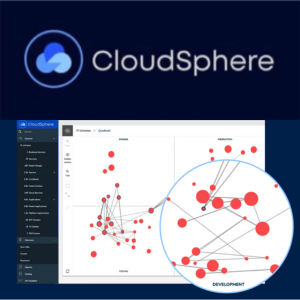The enterprise AI revolution is happening faster than most organizations can manage it. While headlines celebrate AI’s productivity gains and transformative potential, a dangerous shadow is growing beneath the surface of corporate networks—one that could undermine the very benefits organizations are seeking.
The Staggering Scale of Unsanctioned AI Use
The numbers tell a sobering story. According to a recent State of AI report by McKinsey, 78% of organization surveyed used AI in 2024, while other data suggest an alarming reality: 78% of AI users bring their own tools to work, and 52% are reluctant to admit using it. This means that for every officially sanctioned AI deployment, there are likely multiple unauthorized instances running in the shadows.
Recent research reveals that 68% of enterprise employees who use generative AI (GenAI) at work access publicly available GenAI assistants through personal accounts, and more than half (57%) of these employees admitted to entering sensitive company information into these public GenAI assistants. Another study found that 55% of employees use unapproved generative AI technologies at work. With 22% of employees still using personal GenAI accounts even when companies provide approved GenAI assistants, the gap between official adoption and actual usage becomes crystal clear.
What Exactly Is Shadow AI—and Where Is It Hiding?
Shadow AI refers to unauthorized artificial intelligence applications, tools, and services operating within enterprise networks without IT oversight or approval. Unlike traditional shadow IT, which encompasses any unsanctioned technology, shadow AI specifically targets AI-powered solutions that employees deploy independently to boost productivity or solve immediate business challenges.
These unauthorized AI instances are proliferating across every corner of the enterprise:
- Marketing departments using unapproved generative AI tools for content creation
- Sales teams deploying AI chatbots for customer interactions without security review
- Developers integrating AI coding assistants that haven’t been vetted by security teams
- Analysts utilizing AI-powered data processing tools that bypass corporate governance
- Support staff implementing AI customer service solutions without IT knowledge
The problem extends beyond individual tools. Employees often connect these AI applications to corporate data sources, cloud storage, and internal systems, creating a web of unauthorized data flows that security teams can’t see or control. Potential hazards include data compliance violations, cybersecurity vulnerabilities, and intellectual property theft, to name just a few.
The Visibility Gap: Why Traditional Security Falls Short
The challenge for CISOs isn’t just the existence of shadow AI—it’s the complete lack of visibility into where these tools are running, what data they’re accessing, and what risks they’re creating. Traditional security tools struggle with AI discovery because:
- Agent-based visibility limitations: Many security solutions rely on agents for visibility in the network. But you can only install agents on assets you can see. Shadow AI, by its nature, is not visible to agent-based security solutions.
- Dynamic deployment patterns: AI tools often operate as cloud services or browser-based applications that traditional network monitoring might miss
- Encrypted traffic: AI communications frequently use encrypted channels that obscure their true nature
- Rapidly evolving landscape: New AI tools emerge faster than security teams can catalog and assess them
This visibility gap makes it nearly impossible to enforce consistent security policies or maintain effective data governance across the organization.
CloudSphere’s Approach: Comprehensive AI Discovery and Mapping
CloudSphere’s Illuminate360 platform addresses the shadow AI challenge through a fundamentally different approach—comprehensive, agentless discovery that maps the entire IT estate, including hidden AI instances and their relationships to corporate data and systems.
Multi-Environment Discovery
Illuminate360 scans across multi-cloud, hybrid, and on-premises environments without requiring agent installation. This comprehensive approach ensures that shadow AI instances can’t hide in infrastructure gaps or blind spots.
Relationship Mapping
Beyond simple discovery, the platform maps the complex relationships and interdependencies between AI applications and the broader IT ecosystem. This topology mapping reveals how shadow AI tools connect to databases, file systems, APIs, and other critical resources.
Continuous Monitoring
The platform provides real-time visibility into new AI deployments, ensuring that security teams can identify and assess shadow AI instances as they appear rather than discovering them weeks or months later.
Building the Foundation for AI Governance
CloudSphere’s Knowledge Graph serves as the authoritative source of truth for AI-powered automation and governance. As organizations transition to more sophisticated AI deployments, including agentic AI systems, having accurate, current infrastructure data becomes critical for:
- Confident AI deployment: Ensuring that AI systems have reliable data about the infrastructure they’re managing
- Auditable operations: Providing clear documentation of AI access patterns and system interactions
- Risk assessment: Enabling security teams to understand the full scope of AI-related risks across the organization
Taking Action Before It’s Too Late
The shadow AI problem will only grow more complex as AI adoption accelerates — the market is expected to grow by at least 120% year-over-year. Organizations that act now to establish visibility and control over their AI landscape will be better positioned to realize AI’s benefits while minimizing its risks.
The question isn’t whether your organization has shadow AI—it’s how quickly you can discover it, assess its risks, and bring it under proper governance. In the age of AI, visibility isn’t just a security requirement—it’s a competitive advantage.
Ready to illuminate your shadow AI landscape? Contact CloudSphere to learn how Illuminate360 can provide the comprehensive visibility your organization needs to secure its AI-driven future.


